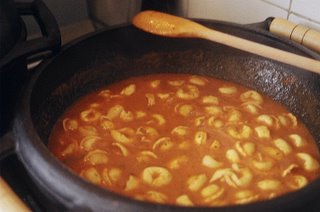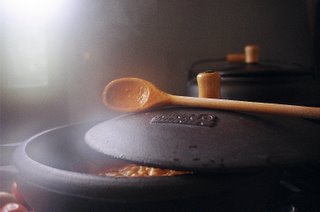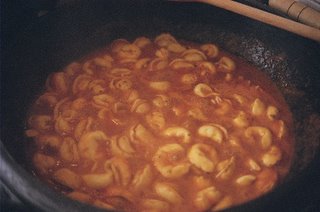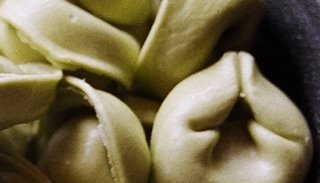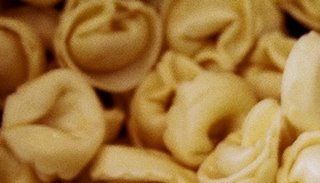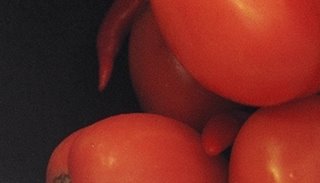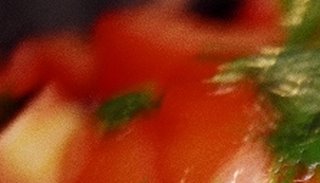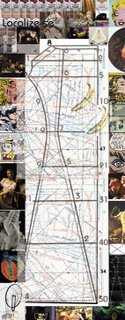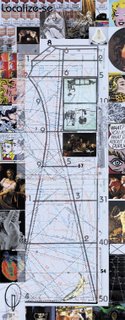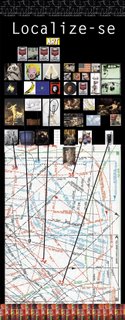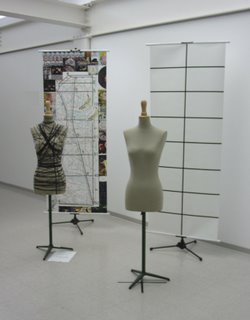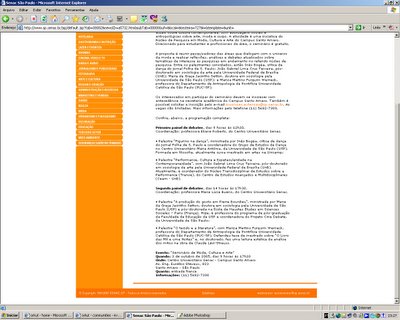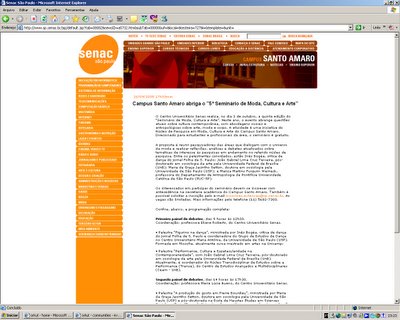Centro Universitário Senac - Campus Santo Amaro
MESTRADO EM MODA, CULTURA E ARTE
WORKSHOP: PROCESSOS DE CRIAÇÃO NA ARTE E NA MODA
28/10
4/11
11/11
18/11
25/11
Prof Dr Fanny Feigenson
“ A questão primordial em uma obra de arte é de que profundidade de vida ela tenha brotado.”
... aquilo que eu fui é aquilo que eu sou e aquilo que dentro da possibilidade eu posso vir a ser. Assim no futuro, a irmã do passado, eu posso me ver enquanto sentado aqui agora mas como reflexo daquilo que então serei.”
Ulisses/ James Joyce, tradução de Bernardina da Silveira Pinheiro.- Rio de janeiro: Ojetiva, 2005
Processos de criação na arte e na moda é um workshop baseado na experimentação a respeito do processo de criação de cada um; do potencial sensível e criativo através do resgate do “ontem” concomitante com o contínuo entrelaçamento do agora; corpos em processo.
A arte e a moda funcionarão como veículos de identificação destes processos.
Serão cinco encontros de 3 horas de duração cada um.
Temas abordados :
A percepção do mundo através dos sentidos: o olhar de lagartixa
A memória da comida e dos objetos
A palavra, imagem, cor e som
O cenário
Os temas serão desenvolvidos através de:
desenhos, textos, pinturas, colagens bi e tridimensionais, fotografias, reproduções, vídeos, PowerPoint.
Algumas referências iconográficas:
Edvard Munch, Arshile Gorky, Louise Bourgeois, Joseph Beuys, Mona Hatoum, Orlan, Greg Friedler, Arthur Bispo do Rosário, Leonilson, Nazaré Pacheco, Lino Villaventura e outros.
Algumas referências bibliográficas:
Louise Bourgeois- Destruição do Pai Reconstrução do Pai (Cosac & Naify)
Cristiane Mesquita- Moda Contemporânea( Editora Anhembi Morumbi)
Peter Pál Pelbart-Vida Capital( Iluminuras)
Rosemary Betterton- Intimate Distance( Routledge)
Gilles Deleuze, Claire Parnet- Diálogos( Escuta)
Stanley Keleman- Anatomia Emocional( Summus Editorial)
Para a primeira aula do workshop, no dia 28 de outubro de 2005, pede-se para o aluno trazer algo para comer e um objeto: os dois elementos remetidos a experiências singulares.
papel A4, lápis de cor aquarelado, lápis integral 6 B
Cronograma do workshop
28/10
Os alunos irão experimentar o alimento trazido; descreverão através de palavras, desenhos, as sensações que tiveram ao comer: cheiro, tato, cor, som. Poderão descrever qual o link com alguma lembrança, situação, que o corpo habitava na época.
O mesmo processo irá se repetir com o objeto trazido.
4/11
Tirar fotografias de algum ambiente relacionado com as experiências vividas na semana anterior. O ambiente pode ser interno, externo, urbano, campestre, virtual.
Fazer xerox A3 de fragmentos de algumas fotografias.
11/11
Análise das fotografias e das reproduções.
Criar uma composição relacionada com as reproduções.
Fazer em um painel A1, a composição selecionada, utilizando materiais bi e tridimensionais. Poderá ser usado materiais diversos como tecidos, plásticos, papéis, fios de diferentes origens, imagens, objetos tridimensionais.
18/11
Criar um audiovisual, a partir da vivência e do resultado do painel. Este último projeto poderá ser feito com cromos, PowerPoint, vídeo. Duração de 6 minutos aproximadamente. Poderá ser feito individualmente ou em parceria.
Apresentação dos audiovisuais
25/11.
Debate sobre os resultados do workshop
